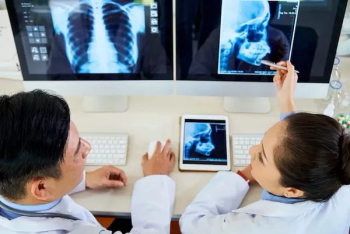
Finns inaugurate world's largest PACS
Not only are all hospitals and imaging clinics in Helsinki and Uusimaa in Finland going filmless -- they are all becoming part of one virtual radiology department, connected to what is believed to be the largest PACS project in the world. Under the
Not only are all hospitals and imaging clinics in Helsinki and Uusimaa in Finland going filmless - they are all becoming part of one virtual radiology department, connected to what is believed to be the largest PACS project in the world.
Under the HUSpacs project, all 21 x-ray departments in Helsinki and Uusimaa will be linked into one virtual department sharing a common image archive. Agfa, which has contracted to complete the final phase of the project, will install more than 100 workstations and 15 Web servers.
Seventeen hospitals have already been integrated into the new community network, with another four to follow by the end of next year. When all the cables are laid, the system will handle more than a million examinations per year, representing about 20 TB of imaging data completed on more than 300 modalities connected to the network.
HUSpacs gives physicians access to seamless radiological services anywhere within the city limits. All images and reports are always available on demand, regardless of where they were produced. Patients will be able to present to any care facility in the city, even if it's not where they are normally treated. For those unable to travel, the facility comes to them in the form of a mobile imaging service.
A similar community PACS (CPACS) idea has surfaced in the U.K. A recent project looking at the impact of a CPACS in the south of England showed increasing evidence that a well-planned PACS designed around the needs not only of the enterprise, but of its dependent community, could deliver substantial improvements in the quality of service and care to patients.
The CPACS is a response to increasing pressure being applied to England's National Health Service to modernize healthcare. It changes the cost-benefit equation in a substantial but as yet uncertain way.
Consultants from the Modernizing Healthcare Partnership worked with West Surrey Health Authority to identify those areas of telemedicine/e-health technology that would help the local health authority (600,000 population, five acute hospitals, 200 general practitioners, plus community and mental health hospitals) provide better service. PACS was identified as one important potential candidate.
According to Dr. John Navein, a consultant to the partnership and originator of the idea originated, a CPACS incorporates several advantages:
?x-rays ubiquitously available, providing better patient service through community follow-up
?community-wide network of service and expertise with subspecialty second opinions available immediately
?financial economies of scale of up to 17%
"On the other hand, it could well be too big to manage," he said.
Newsletter
Stay at the forefront of radiology with the Diagnostic Imaging newsletter, delivering the latest news, clinical insights, and imaging advancements for today’s radiologists.




